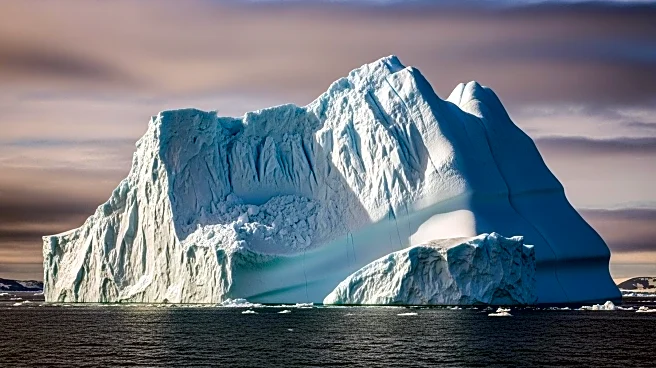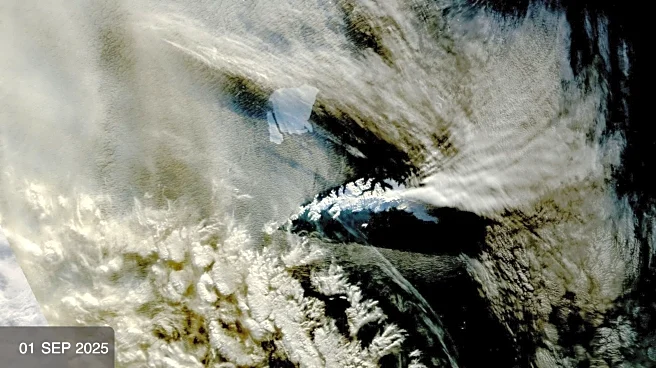What's Happening?
The world's largest iceberg, known as A23A, is undergoing significant fragmentation and is expected to collapse by the end of November. Originally part of Antarctica's Filchner–Ronne Ice Shelf, A23A broke away in 1986 and has been drifting northward. Recent observations indicate that the iceberg, once the size of Rhode Island, has shrunk to the size of Houston. Ice scientist Ted Scambos from the University of Colorado notes that the iceberg is being flexed by waves and tides, leading to its accelerated fracturing. Smaller icebergs, named A23D, A23E, and A23F, have already broken off from A23A. The iceberg's movement towards warmer waters near South Georgia Island is contributing to its rapid disintegration.
Why It's Important?
The disintegration of A23A highlights the dynamic nature of Antarctic ice and its potential impact on global sea levels. While the iceberg itself will not raise sea levels, its collapse could accelerate the flow of land glaciers into the ocean, contributing to rising sea levels. This event underscores the importance of monitoring icebergs and ice shelves as indicators of climate change. The fragmentation of such large ice masses can have cascading effects on ocean currents and ecosystems, affecting marine life and global weather patterns. Scientists are closely watching these developments to better understand the implications for climate models and future environmental policies.
What's Next?
As A23A continues to fracture, scientists anticipate further breakage into smaller, untrackable pieces. The Antarctic spring and summer seasons are expected to exacerbate the iceberg's collapse due to warmer temperatures and increased water movement. Researchers will continue to monitor satellite images and environmental conditions to assess the iceberg's status and potential impacts. The ongoing observation of A23A provides valuable data for understanding the processes affecting icebergs and their role in the broader climate system.
Beyond the Headlines
The natural process of iceberg fragmentation, while not unprecedented, serves as a stark reminder of the changing climate and its effects on polar regions. The collapse of A23A may also influence geopolitical discussions on climate action, as nations consider the long-term consequences of ice loss and sea level rise. Additionally, the event may spur advancements in remote sensing technology and data analysis, enhancing the ability to track and predict similar occurrences in the future.













